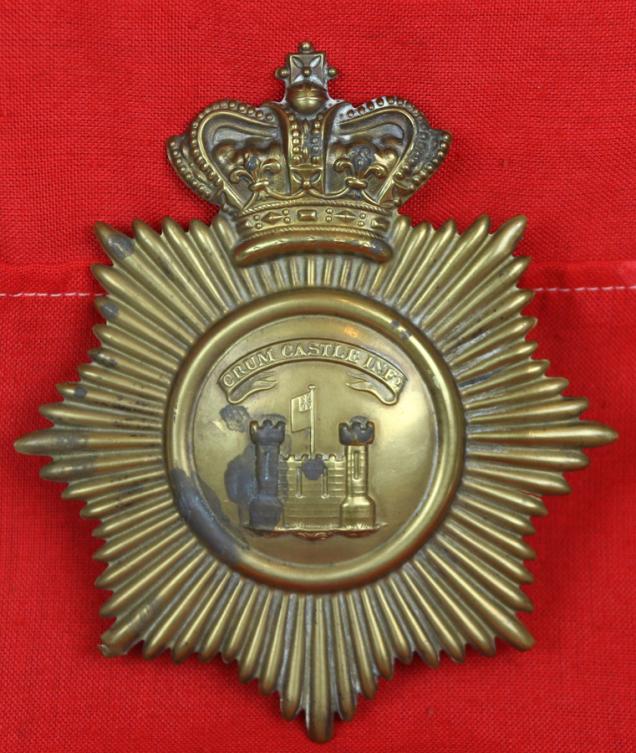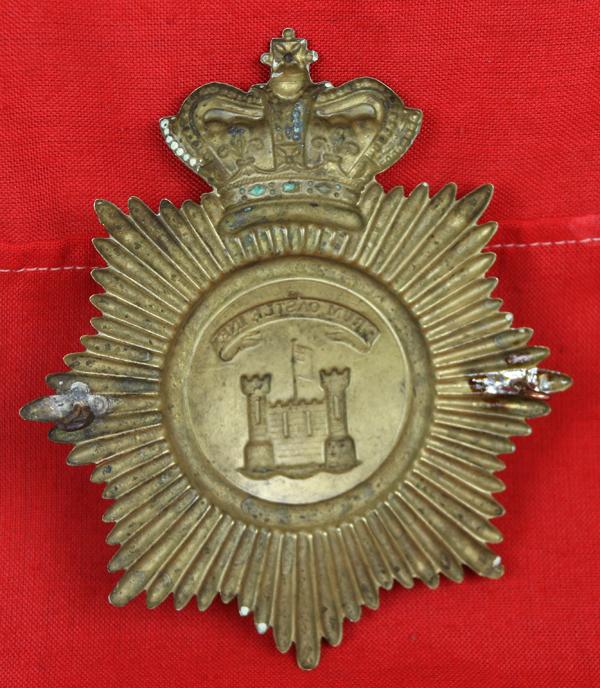A Most Rare Early19th Century, Georgian to William IVth Irish, Crum Castle Infantryman's Large Shako Helmet Plate
This is a super, and incredibly desirable large Bell-Top Shako helmet plate, from one of the small Irish Militia of the early 19th century. Their motto was 'Rebels Lie Down'. Surviving artefacts of this militia are so scarce that we know of only one other surviving piece of early uniform militaria, a shoulder belt plate, regimentally named and also bearing their motto.
Early 19th century Irish Militia helmet plates are incredibly rare, highly prized and very collectable indeed.
Crum Castle was the alternative old spelling of Crom Castle, County Fermanagh. Although the Yeomanry’s official existence ended in 1834, the last rusty muskets were not removed from their dusty stores till the early 1840s. With unintentional but obvious symbolism, they were escorted to the ordnance stores by members of the new constabulary. Although gone, the Yeomen were most certainly not forgotten. For one thing, they were seen as the most recent manifestation of a tradition of Protestant self-defence stretching back to plantation requirements of armed service from tenants then re-surfacing in different forms such as the Williamite county associations, the eighteenth-century Boyne Societies, anti-Jacobite associations of 1745 and the Volunteers. Such identification had been eagerly promoted. At the foundation of an Apprentice Boys’ club in 1813, Colonel Blacker, a Yeoman and Orangeman, amalgamated the siege tradition, the Yeomanry and 1798 in a song entitled The Crimson Banner:
Again when treason maddened round,
and rebel hordes were swarming,
were Derry’s sons the foremost found,
for King and Country arming.
Moreover, the idea of a yeomanry remained as a structural template for local, gentry-led self-defence, particularly in Ulster. When volunteering was revived in Britain in 1859, northern Irish MPs like Sharman Crawford tried unsuccessfully to use the Yeomanry precedent to get similar Irish legislation. Yeomanry-like associations were mooted in the second Home Rule crisis of 1893. The Ulster Volunteer Force of 1911-14—often led by the same families like Knox of Dungannon—defined their role like Yeomen, giving priority to local defence and exhibiting great reluctance to leave their own districts for training in brigades. Two loop mounts [one with old re-bedding] 6.25 inches high.
Code: 23283
1895.00 GBP


